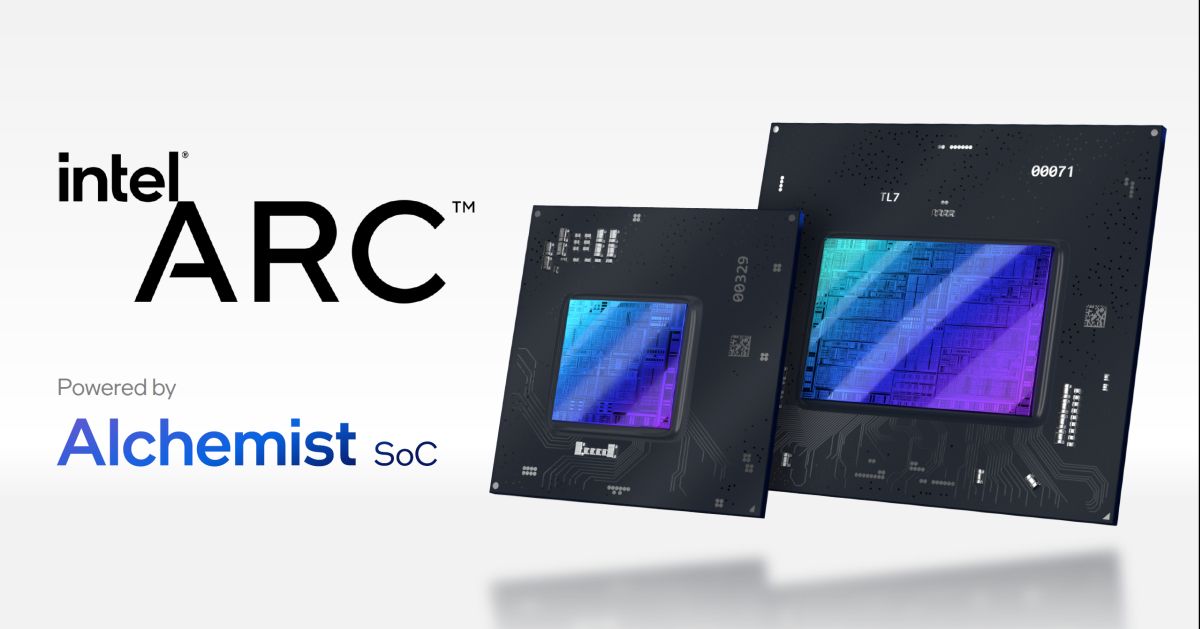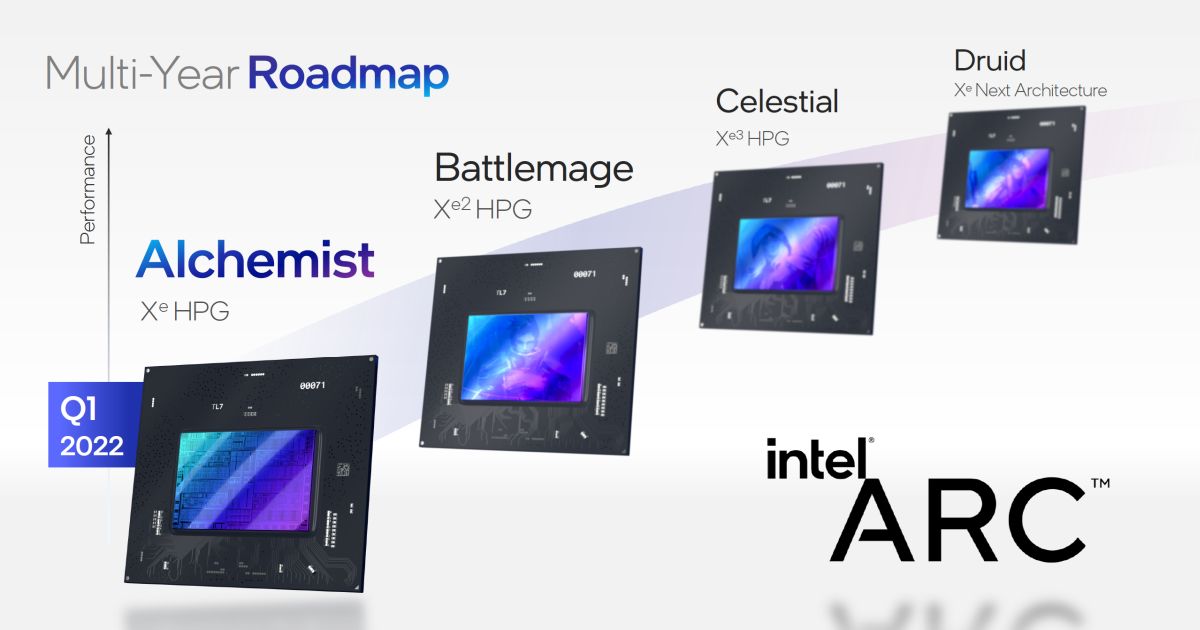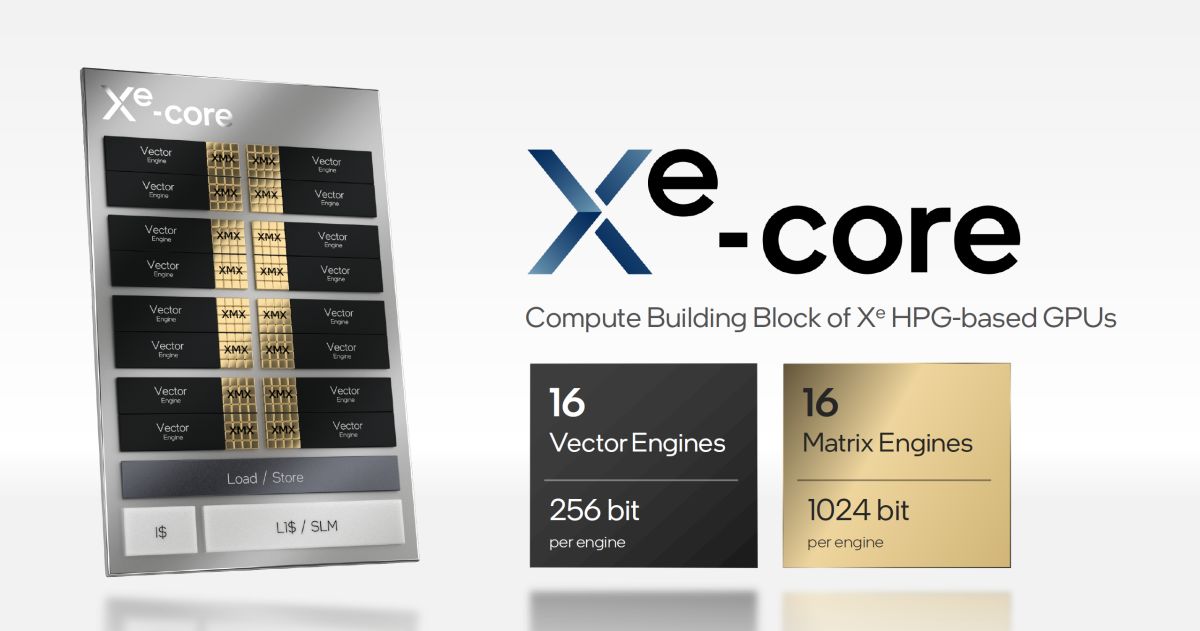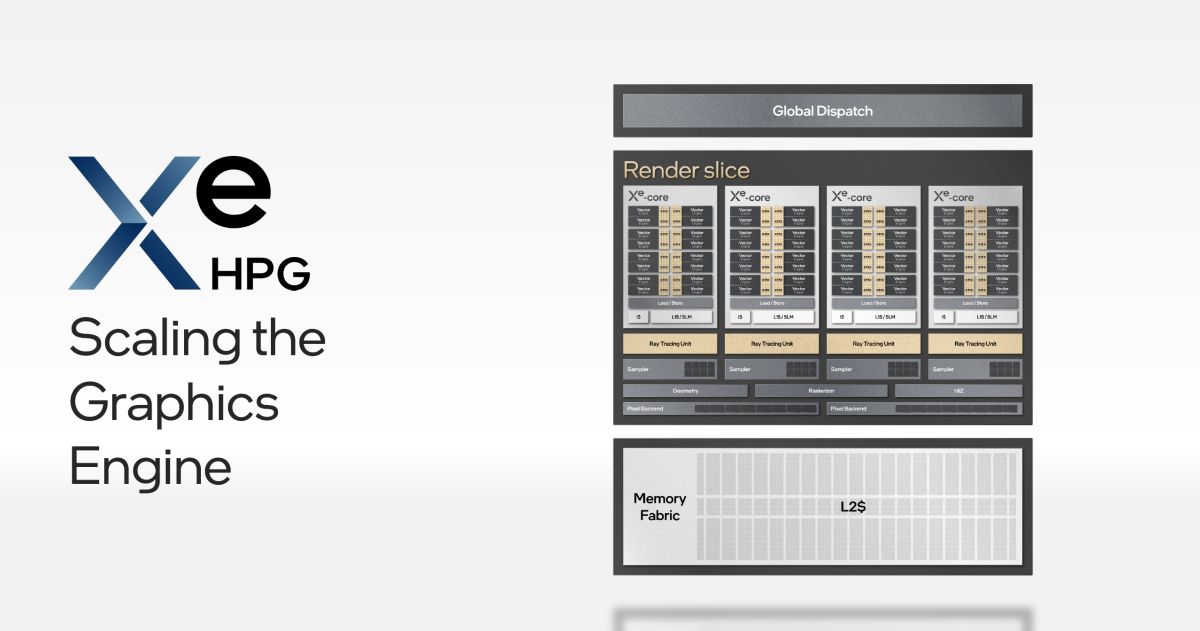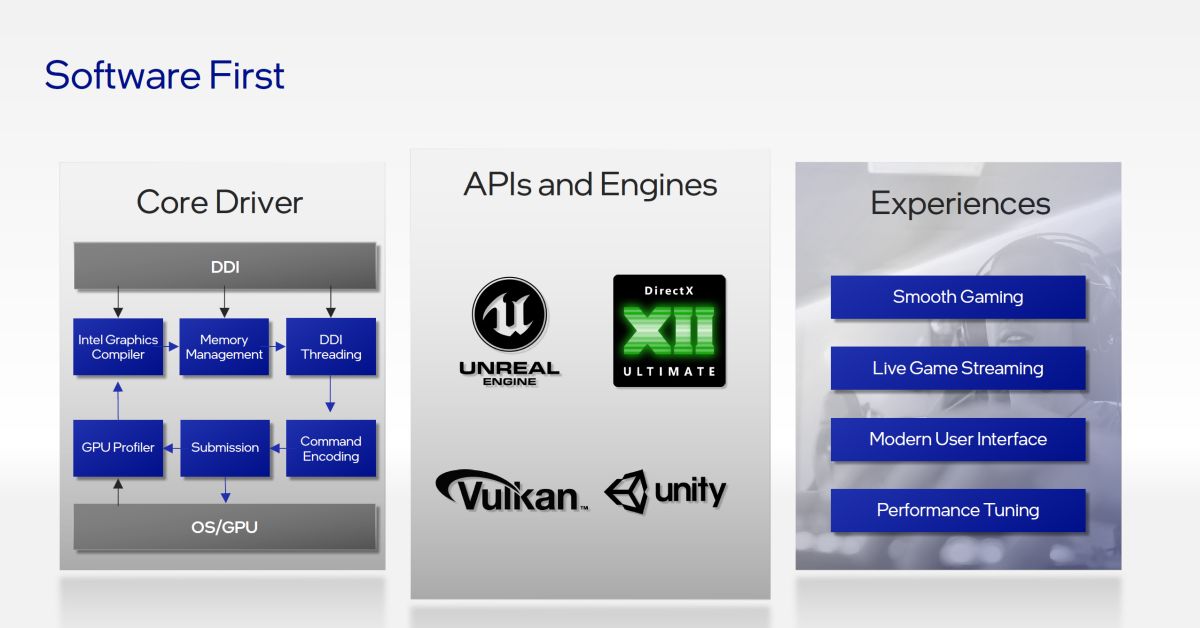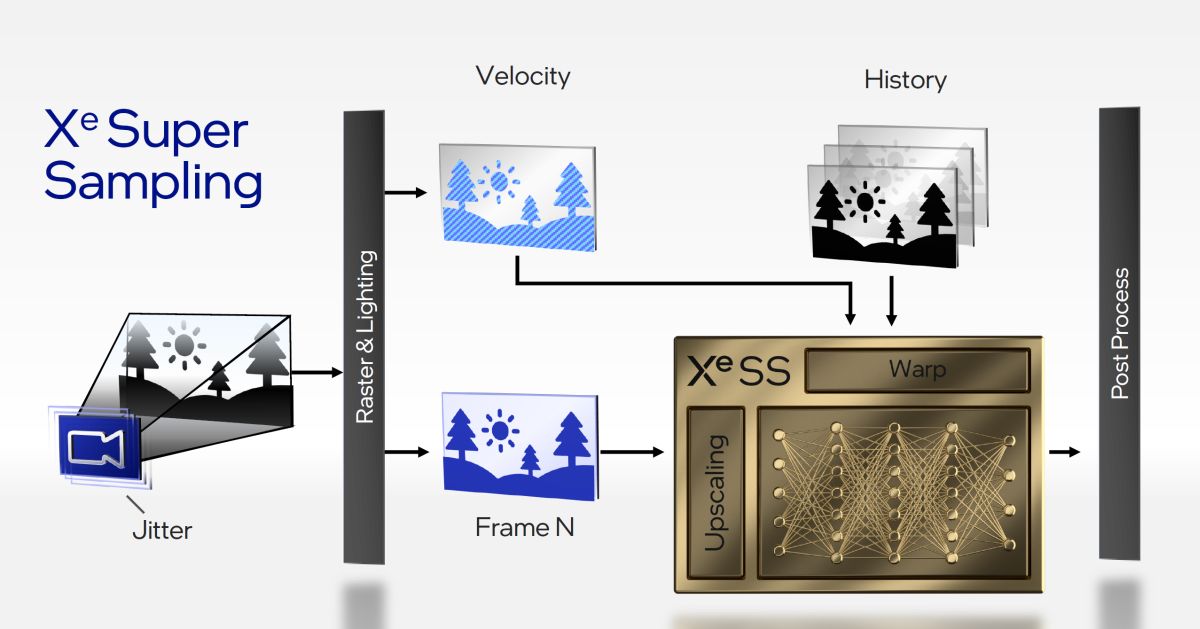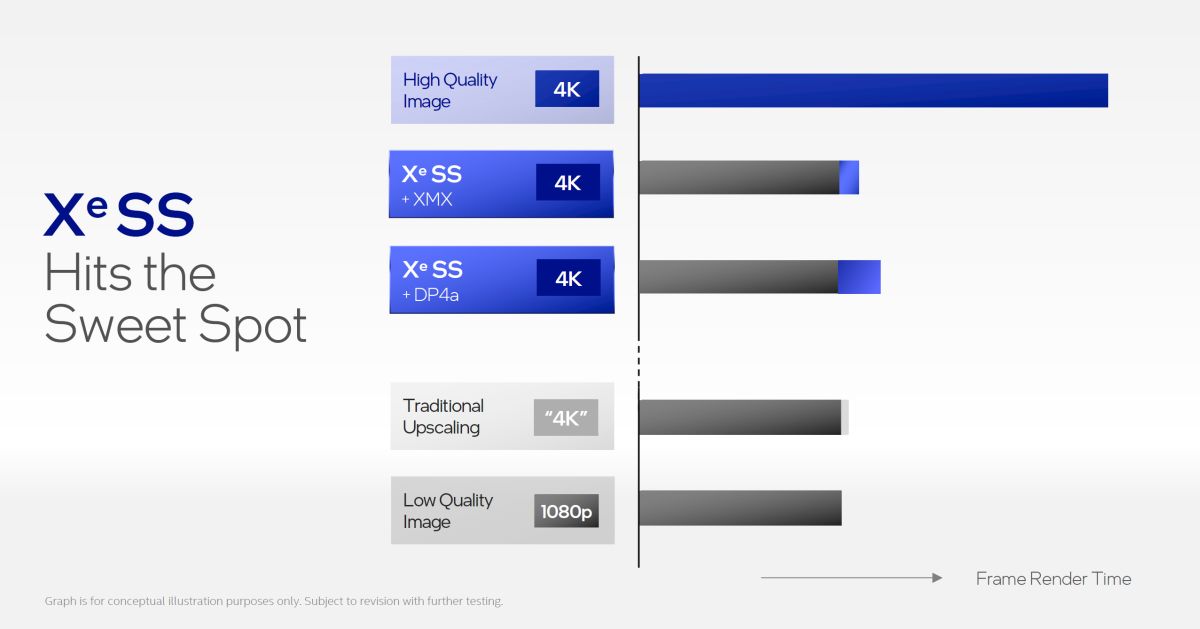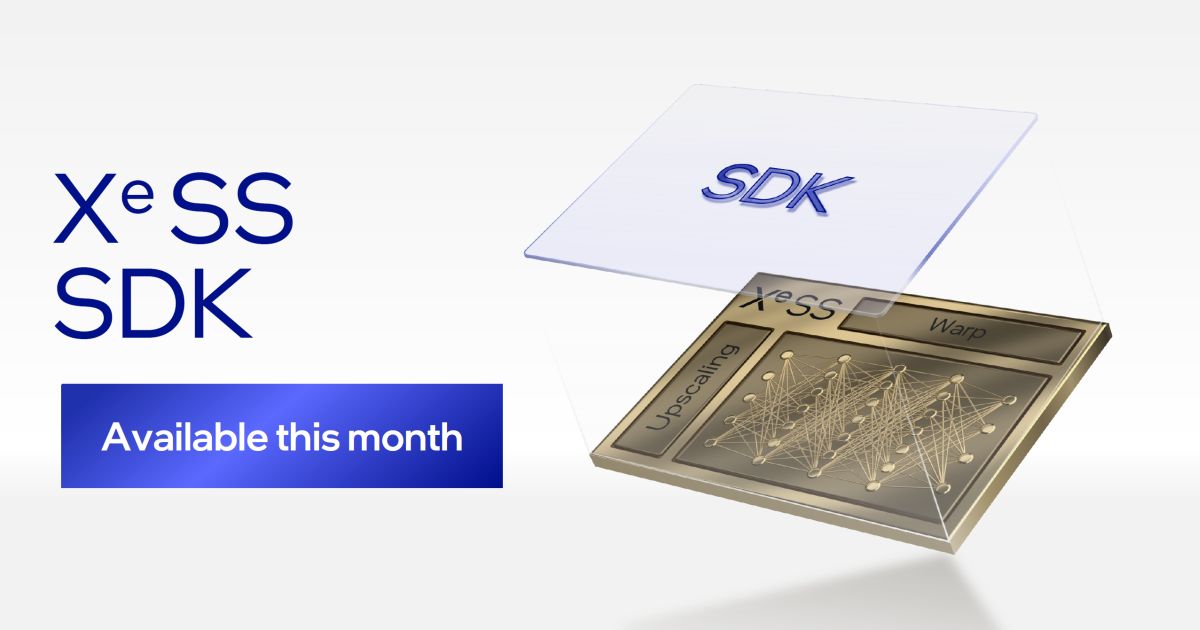From the presentation, we know that Alchemist – previously known by its codename DG2 – is the first of four GPUs that are a part of Intel’s graphics roadmap. The other three GPUs are Battlemage, Celestial, and the Druid SoC. Intel also said that it addressed its development of Xe-HPG from a “Software First” approach.
This included dealing with Alchemist’s Core Driver, the APIs and GPU engines it could fully utilise and run with, and above all else, ensuring that the finished product would deliver the immersive experience that gamers are accustomed to today. Including smooth gaming sessions, unfettered live game streaming, and the ability to tweak and modify the performance metrics of the GPU. At least, on a software level. Moving on, the Xe-HPG and Alchemist GPU are comprised of Xe Core, which acts as what Intel describes as the “Compute Building Block” of the entire GPU. Specs-wise, the Xe Core comprises 16 Vector Engines running at 256-bit per engine, and 16 Matrix Engines running at 1024-bit per engine. Oh, and each Xe Core is based on TSMC’s N6 process node.
Another important piece of hardware that’s been baked into Alchemist, along with the Xe Cores, are ray-tracing units that directly support Microsoft’s DirectX Raytracing (DXR), as well as Vulkan Ray Tracing. What this means is that, like NVIDIA’s GeForce RTX series and AMD’s Radeon RX 6000 series GPUs, Alchemist will be able to run games that support real-time ray-tracing, but as always, support for this will be to the discretion of video game publishers. Of course, being able to run a game with ray-tracing switched on will most certainly put increased pressure on Alchemist. In conjunction with the last bit, Intel announced XeSS, its very own upscaling technology to aid the GPU at resolutions like 4K, by running them at lower resolutions and blowing them up at higher resolutions.
As you can imagine, the technology works in ways similar to NVIDIA’s DLSS and AMD’s own FidelityDX SuperResolution (FSR); Intel says that the feature will provide a 2x performance boost for capable titles, but like its rivals, it will still require game developers to put their titles through a neural network. In order to properly train the Alchemist and enable to it deliver the desired performance and frames at the end of the day. In other words, it’s also using AI technology to pull off this feat. Sadly, the only thing missing from this presentation was a launch date. Intel says that it is already sampling out units of the ARC Alchemist and that the card should be ready and in our hands by 2022, but fell short of a specific launch date. As for XeSS, the chipmaker says that the SDK will be available for developers from this month onwards.
